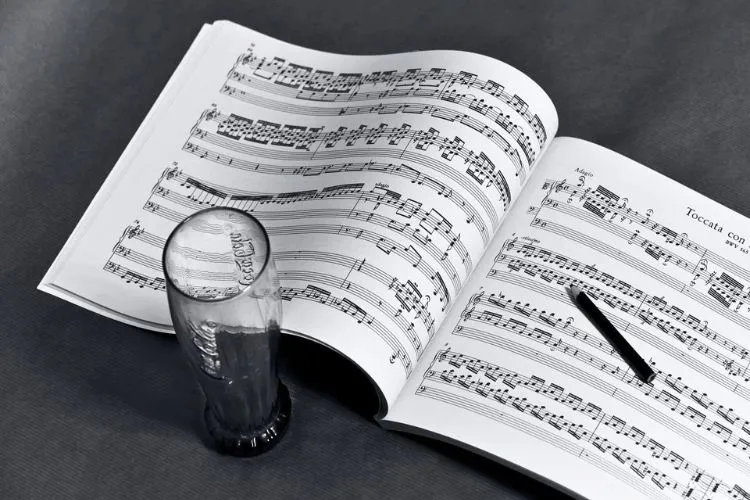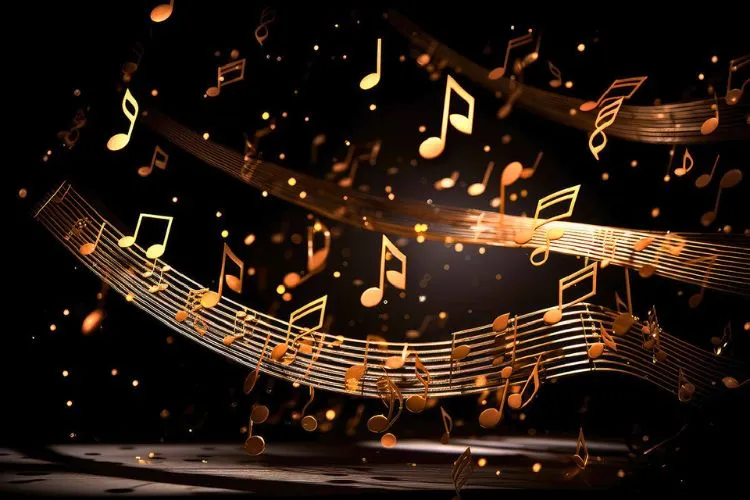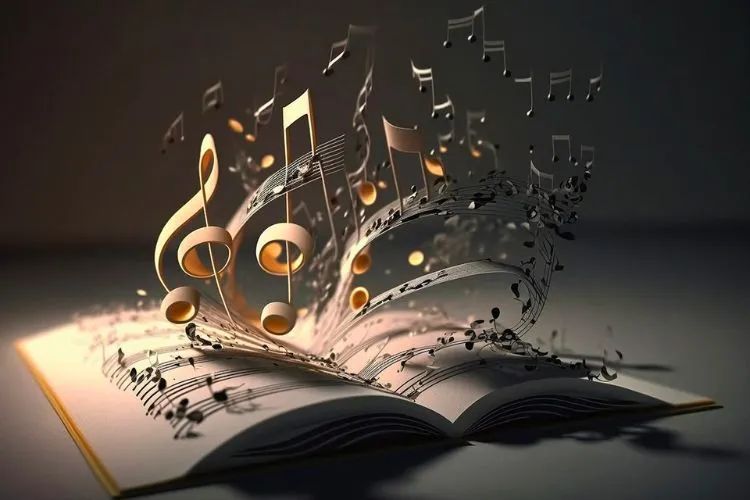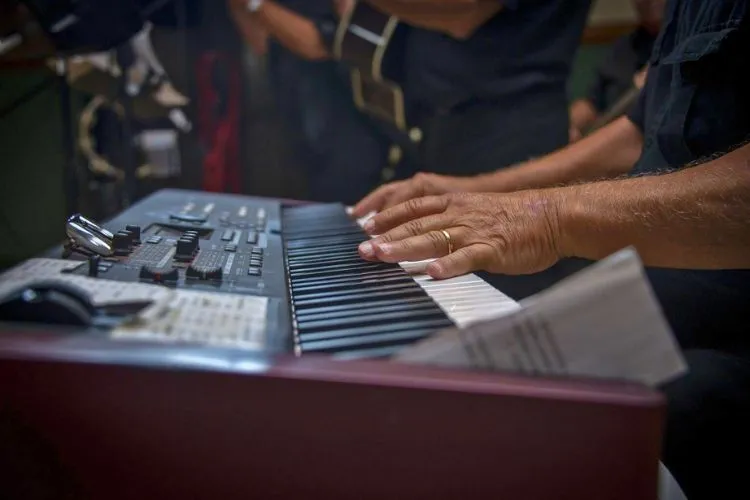Music moves us in profound ways. At its core, this magic often comes down to two fundamental elements: rhythm and melody. Both play crucial roles in making music captivating.
In this guide, we’ll explore “Rhythm vs Melody” both of these components to grasp their essence and differences.

Contents
🎶What is Rhythm?
Rhythm shapes the timing of music. It’s what makes your feet tap and your head nod. It involves patterns of sounds and silences, creating the beat that drives a piece of music forward.

- Definition & Characteristics: Rhythm is the sequence of durations of notes and rests. It gives music its structure, allowing other elements like melody and harmony to follow.
- Identifying Rhythm in Music: To recognize rhythm, listen for the pattern in a song. It might be the steady beat of a drum or the structured pause between notes. Rhythm forms the backbone of music, offering a predictable framework that listeners and performers rely on.
- Importance in Composition: Without rhythm, music would lack form and flow. It’s essential for setting the pace of a piece and for creating mood and movement.
- Enhancing Rhythmic Skills: Practicing with a metronome can sharpen your sense of rhythm. Try playing or clapping along to different beats to improve your rhythmic accuracy.
🎶What is Melody?
While rhythm sets the pace, melody gives music its identity. It’s the sequence of notes that you hum or sing along to.

- Definition & Characteristics: A melody consists of a series of musical notes arranged in a particular rhythmic pattern. It is recognizable and memorable, making it the main focus of many songs.
- Identifying Melody in Music: Listen for the tune that stands out in a song. It’s often carried by the lead instrument or vocalist. A strong melody captures the listener’s attention and conveys the emotional tone of the piece.
- Importance in Composition: Melodies create an emotional connection with the audience. They transform simple rhythms into compelling stories and messages.
- Crafting Memorable Melodies: To write a memorable melody, experiment with different note sequences and rhythms. Consider the emotion you want to convey and how the melody interacts with the song’s rhythm.
🎶Rhythm vs Melody: Dissecting the Differences
Understanding the distinct roles of rhythm and melody enriches our appreciation of music. Here’s how they differ:
- Fundamental Differences: Rhythm is the timing aspect of music, while melody is the series of notes that creates the song’s theme. Rhythm is about when notes occur, and melody is about which notes occur.
- The Interplay in Composition: Though different, rhythm and melody need each other. Rhythm provides the structure for the melody to express the song’s emotional and thematic content.
🎶The Role of Instruments and Technology in Rhythm and Melody

Instrumental Influence
Instruments play a pivotal role in defining rhythm and melody in music. Percussion instruments like drums primarily contribute to the rhythm, setting the beat and pace of a song.
On the other hand, melodic instruments such as piano, guitar, or violin, weave the melody — the tuneful aspect of a piece that one generally sings or hums along to. Each instrument lends its unique tonal quality, enriching the music and adding depth to its rhythm and melody.
Technology’s Impact
The advent of technology has revolutionized the way we create and perceive rhythm and melody. Instruments such as synthesizers allowed artists to explore a broader range of sounds, helping them craft unique rhythms and melodic lines.
Digital audio workstations (DAWs), like Logic Pro or Ableton Live, have further expanded these opportunities. DAWs enable intricate layering of multiple tracks and manipulation of tempo and pitch, offering endless possibilities to play with rhythm and melody.
As technology continues to advance, it opens up the musical landscape to innovative sounds and compositions that are beyond what traditional instruments could provide.
🎶Rhythm and Melody in Composition and Songwriting
Building Blocks of Composition
Music composition is akin to constructing a building — it requires a solid foundation and well-designed structure. Rhythm and melody serve as the building blocks in this process.
The rhythm, akin to a building’s foundation, provides a sense of timing and groove, while the melody, similar to the building’s structure, weaves an emotional narrative within this rhythmic framework.
Composers carefully balance these elements, ensuring that the rhythm supports the melody and guides the listener through the musical journey.
Tips and Techniques for Aspiring Musicians
For aspiring musicians, understanding rhythm and melody is key. Begin with simple, solid rhythms as your base, and layer it with a compelling melody.
Experiment with different rhythmic patterns and melodic structures, and remember that repetition can create a sense of familiarity and catchiness.
Collaborate with others to gain feedback and new perspectives. With digital tools like metronomes for maintaining rhythm or software for composing melodies, sharpen your skills in these two essential elements of music.
As your confidence grows, challenge yourself to explore beyond traditional rules and conventions to find your unique musical voice.
🎶Case Studies & Examples
Analyzing songs can illuminate how rhythm and melody work together. Consider the driving beat of Michael Jackson’s “Billie Jean” compared to the sweeping melody of “Somewhere Over the Rainbow.” Each song uses rhythm and melody uniquely to create an unforgettable experience.
🎶Frequently Asked Questions (FAQs)
Rhythm involves patterns of beats and silences in music, while the beat is the steady pulse underlying those patterns.
Yes, some forms of music focus solely on rhythm, using instruments like drums to create engaging soundscapes without a distinct melody.
A strong melody is memorable and evokes emotion. It stands out and carries the essence of the song.
No, melody inherently requires rhythm to shape its sequence of notes. Even free-form melodies have an underlying rhythm.
Conclusion
Rhythm and melody are the heartbeat and soul of music, driving its structure and narrating its stories.
By understanding their roles, we can dive deeper into music’s power to move and inspire. This exploration marks just the beginning of a more profound musical appreciation journey.
